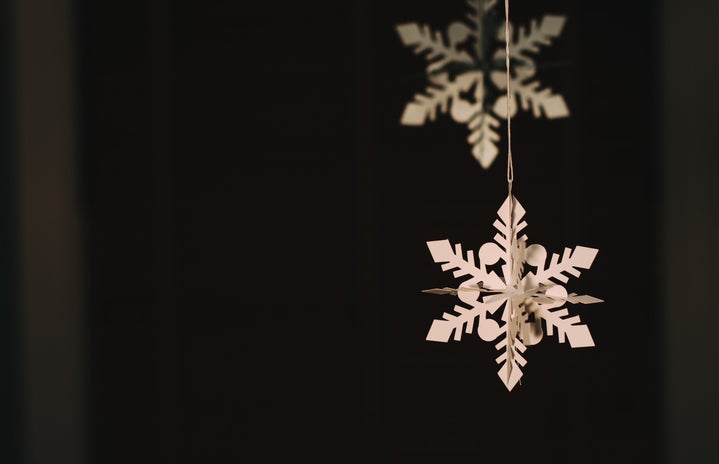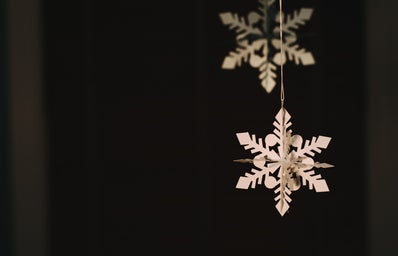Yule, one of the oldest winter celebrations in the world, is coming up quickly.
What is Yule?
Yule is on the shortest and darkest day of the year and the return of the sun, in other words when the days begin to lengthen again. It’s the festival or rebirth and a time for reflection and celebration. It is a time of hope because the days begin lengthening again as spring is coming.
Yule celebrations were first documented as far back as the fifth century (1,500 or so years ago) by the Germanic pagans as a midwinter festival to stave off the dark and cold and prepare for the long winter still to come.
Communities, specifically farmers, would assemble at the temple with food, livestock, and others in their arms. The animals were indeed sacrifices… It tended to get very messy if you included all the drinks they consumed. Not a good combo.
Celtic druids would give mistletoe as a blessing to symbolize life during Yule (which is interesting seeing as it’s kind of poisonous).
Celebrations lasted for 12 days with huge bonfires, where many feasting and drinking occurred. The day of Yule was called Mother’s Night. The Yule tree was decorated, and a Yule log would burn. People would remain awake all night. This is also where the 12 Days of Christmas was coined.
When Is Yule?
Yule, or the winter solstice, occurs on December 21 or 22 every year, the day when the Earth’s axis is tilted furthest away from the sun. Some pagans celebrate the full twelve days, however.
Christians ‘Inspired’ by Yule to Create Christmas
The reason this celebration sounds so familiar is because when Christianity spread across Europe, many pagan holidays were lost and forced to practice Christianity in the sixth and seventh centuries. The origins of Christmas are traced back to ancient Roman and Norse civilizations. December 25th was not even Jesus’, a character from the Christian bible, date of birth. While Christmas is primarily celebrated as a Christian holiday for the birth of Jesus Christ, it coincides with the winter solstice and takes elements from pre-Christian traditions.
Christian followers knew that it would be difficult for people to divorce themselves from all they had known completely, This included the celebrations of the winter solstice, so they kept and altered some of these traditions so it was something people were familiar with.
Who Celebrates Yule?
This was the must-have festival for the Vikings, Germanic tribes, and people that pre-date Christian Europe. In this current day and age, Wiccans and other pagan practitioners still keep this celebration alive. However, Christians took a lot of elements from yule, and many might not realize that they are also celebrating the pagan holiday. Think Yule logs, feasting, exchanging gifts, wreaths, Santa Claus, and celebrating. Even the Christmas trees count.
What is Pagan?
‘Paganism’ was originally a word used by the early Christians to refer to the polytheistic Romans. It basically translates to ‘non-Christians.’ A pagan is a person who practices a religion that is nature-based and polytheistic. It is a growing spiritual movement, especially in the United States.
Yule Traditions
Put up a yule wreath: Make a wreath with pine, mistletoe, and ivy. These represent everlasting life, protection, and prosperity. Holly and ivy ward off negative energy, mistletoe brings fertility and abundance and pine has a healing magic.
Create a Yule Altar: Here, you can put plants, stones and items associated with Yule. Here is a small list:
- Pine, mistletoe, juniper, holly, branches, pinecones, berries, and cedar.
- Candles, usually in red, green, or gold.
- Crystals like ruby, carnelian, and ruby (again the red, green, or gold associated colors).
- Symbols: Snowflakes, or even melted snow in a jar. Whatever your gut tells you is associated with Yule and the winter solstice.
- Sun symbols: like the sun tarot card, suncatcher, etc
- Bells
- Winter produce (depending on what is in season) but like chestnuts, apples, and oranges.
Light a Yule Log
- Decorate an oak log (these can usually be bought at nurseries) with pine cones, dried berries, holly, mistletoe, cinnamon sticks, and other related things. Burning a yule log is a symbolic ritual to release the past issues and negative energy that you do not want to follow you into the new year. It also does its purpose to welcome back the sun. (If you don’t have a firepit here is a hack: Youtube Fireplace for your home instead!).
Do a Yule Ritual
Simmer pots are an amazing way to cleanse you, and your home and bring in positive energy and abundance. Just get a pot, fill it with water, and add your ingredients: oranges, cinnamon sticks, full cloves, and sea salt. Let it simmer on the lowest heat possible. Stir counterclockwise to chase away any remaining bad energy and then clockwise to bring forth abundance and warmth to yourself and your home.
Clean Your Room
Get negative energy out by cleansing your space both spiritually and physically. Get to Yuletide cleaning. Even smoke cleanse.
Get yourself a Yule Gift
Treat yourself. Simple as that. Whether that be a witchy bath for self-care, shopping for gifts for your loved ones, making a cake or a pastry you love, etc, even if it is just hibernating with a good book and a scented candle.
Yule as a solstice celebration is observed by many neo-pagans, both as individuals and as groups. Back, way back then, it was the norm. It has not only been forgotten by many but is being practiced by those who now resent pagans without knowing the origins. It is important to learn our history and what we practice during the most giving time of the year. All can co-exist, none needs to overtake the other once again. It’s interesting to learn where we once were, no matter what you believe, and respect all.
Happy Winter Solstice!


